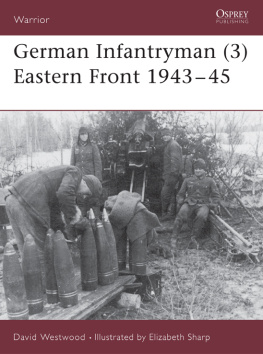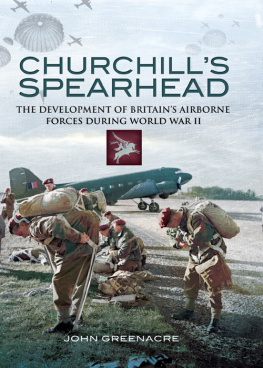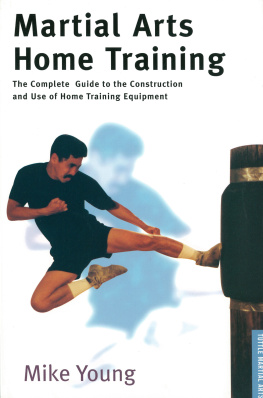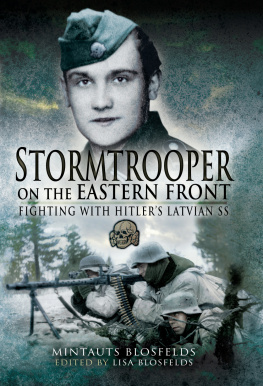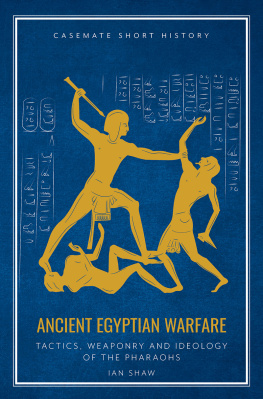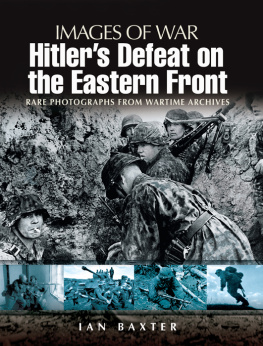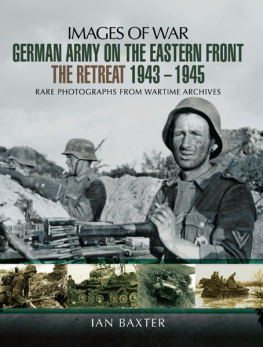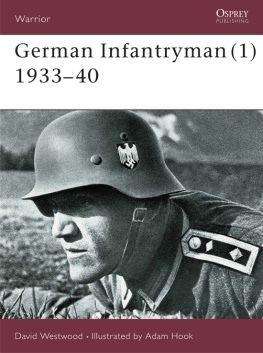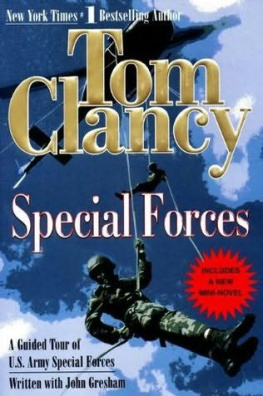Westwood - Eastern Front 1943-45
Here you can read online Westwood - Eastern Front 1943-45 full text of the book (entire story) in english for free. Download pdf and epub, get meaning, cover and reviews about this ebook. year: 2002, publisher: Osprey Publishing, genre: Non-fiction. Description of the work, (preface) as well as reviews are available. Best literature library LitArk.com created for fans of good reading and offers a wide selection of genres:
Romance novel
Science fiction
Adventure
Detective
Science
History
Home and family
Prose
Art
Politics
Computer
Non-fiction
Religion
Business
Children
Humor
Choose a favorite category and find really read worthwhile books. Enjoy immersion in the world of imagination, feel the emotions of the characters or learn something new for yourself, make an fascinating discovery.
- Book:Eastern Front 1943-45
- Author:
- Publisher:Osprey Publishing
- Genre:
- Year:2002
- Rating:4 / 5
- Favourites:Add to favourites
- Your mark:
- 80
- 1
- 2
- 3
- 4
- 5
Eastern Front 1943-45: summary, description and annotation
We offer to read an annotation, description, summary or preface (depends on what the author of the book "Eastern Front 1943-45" wrote himself). If you haven't found the necessary information about the book — write in the comments, we will try to find it.
Eastern Front 1943-45 — read online for free the complete book (whole text) full work
Below is the text of the book, divided by pages. System saving the place of the last page read, allows you to conveniently read the book "Eastern Front 1943-45" online for free, without having to search again every time where you left off. Put a bookmark, and you can go to the page where you finished reading at any time.
Font size:
Interval:
Bookmark:
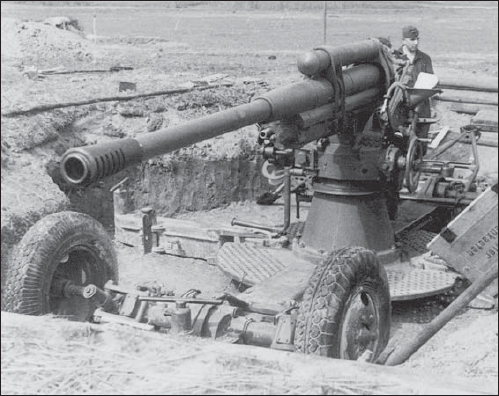
I n the spring of 1943, German forces were no longer the undisputed masters of the battlefield. In North Africa they were being pushed back into an enclave in Tunisia, facing defeat by the combined Allied forces, and in Russia they were on the back foot after Stalingrad. The battle of Stalingrad had been a resounding defeat for both the German 6 Army, which had been surrounded and subsequently surrendered, and for the German General Staff, which had seen the tide of war reversed, with the Russians beginning an offensive in November 1942 which was to end in Berlin in May 1945.
However, the quality of the German soldier was to have a significant effect on the Russian front. The fighting qualities which were so obvious in the advance and in Blitzkrieg were to be equally valuable in the fighting retreat which the Germans conducted over the whole of the eastern front in the two years it took the Russians to reach the German capital.
Basic training in Germany always emphasised the need for rehearsal and practice, and although the training period was shortened as the situation grew worse, the German soldier proved himself adept at fighting the interminably long rearguard action. In Germany efforts were continually being made to try to stem the Russian advance, but the sheer size of the Russian Army and its never-ending reserves of manpower, coupled with its growing expertise, made the final result inevitable.
Improved weaponry was seen by the Germans as one way of making up for the manpower shortages becoming increasingly apparent in the German Army. The MG42 machine gun was a great improvement on the MG34, having far fewer stoppages due to dust and dirt, and in the winter the use of sunflower oil also reduced the freezing-up of this and other weapons. A significant step forward was also made in rifle technology: the appearance of Russian semi-automatic and self-loading rifles resulted in experiments which eventually produced the MP44. This rifle (see ) fired a practical battlefield round, was semi-automatic, and had a 30-round magazine. Unfortunately for the average Landser, issue was more often than not to the Waffen-SS troops rather than to line infantry, and the Kar 98k was still the standard rifle for most infantrymen.

Leave on the eastern front was welcomed, and the Germans tried to ensure a reasonable rotation system. These men are on their way out, as is shown by the smiles on their faces. All soldiers travelled with weapons to assist in guarding their leave transport against partisan attack. The journey was long, and those on leave often spent more time travelling than at their destinations.
Support weapons were little modified in themselves, but some units benefited from the development of the assault gun (Sturmgeschtz), tracked guns which were sometimes also armoured. These guns were issued as a substitute for the more complicated tanks, and as support artillery they were of great value in the field. Some versions were fitted with anti-tank guns such weapons were singularly useful against the mass tank attacks of the Russians, as long as they were supported by infantry.
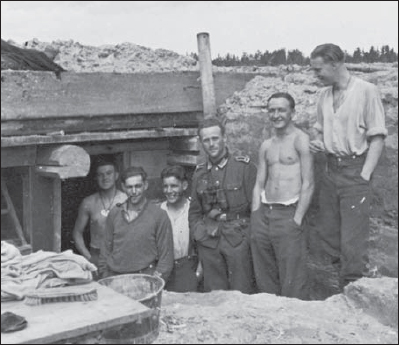
Rest and relaxation were almost as rare as leave on the eastern front. Here a section takes some time off in front of their section dugout. This is a well-made home, with overhead protection against shell and bomb attack, but it has yet to be finished with even more earth overhead. Personal laundry is on the table in the foreground, together with a practical scrubbing brush.
Air support steadily waned for the Germans, and the sight of large numbers of Luftwaffe aircraft opening an attack were only a memory in 1943, 1944 and 1945. Most aircraft were either defending Germany against the increasing strength of the Allied air offensive, or, on the eastern front, suffering from spares or fuel shortages. Russian ground-attack aircraft were far more in evidence.
The Russians had surprised the Germans initially by their total lack of coordination in defence; by the spring of 1943 another Russian Army had appeared, one which was hell-bent on recovering the land taken by the Germans in such brutal fashion, and with few qualms about the way it achieved that objective. The appalling German racial attitude towards the Russians was about to reap its harvest, and ordinary Russians and troops left behind during the German advance led to increasing numbers of partisans, whose combat methods were unforgiving.
Partisan warfare during the Russian campaign was vicious, with neither side giving any quarter. Needless to say, the Russians learned quickly from early failures, and soon the Germans were faced with a rear-area security problem which grew until they were waging war not only on their front-line but also in their lines of communication at the rear. Nowhere seemed safe. The war in Africa was, in direct contrast, a war between soldiers alone; in Russia it seemed to every German that he had to fight the Russian Army, the Russian people, the Russian weather, never-endingly.
The tactical examples chosen for this book all exhibit the various characteristics of the fighting from 1943 to 1945, and the small-unit tactics that evolved. The fighting retreat was nothing new, but to carry out such a retreat for over two years was quite remarkable; that it happened was due to a very great extent to the fighting qualities of German infantry who fought until they could fight no more.
German reports noted that: Partisan operations do not conform to any hard and fast tactical doctrine or principles that have general applicability. The partisan fighter is unpredictable and unscrupulous. His weapons are usually simple in design and limited in number. They achieve deadly effectiveness in the hands of a tough, crafty group of individuals who operate almost entirely independent of normal logistical support. Proficient in camouflaging their activities, these men spread a reign of terror over the civilian population of their own country.

Russian prisoners. The man in the centre is searching his companion for head lice. Life was not free of parasites for either side.
Those German troops engaged in anti-partisan warfare would concur with the reign of terror assessment. The experience of fighting the partisans was often horrific and exhausting, as this German soldiers account testifies: We tramped through scrub and bushes for about two weeks, in water most of the time. It was pointless to try and get our boots dry. We had sporadic contacts with the partisans. One episode from that time upset me terribly. The Russians had captured one of our reconnaissance patrols, four men. Three of them were old hands and they quickly scampered off and were gone, leaving an 18-year-old behind them dead on the ground. I was only 19 myself at this time. The Russians had not only killed him but absolutely massacred him. His whole brain hung out of his smashed skull. We also went on night marches, hunting the partisans. Once, when we came to a clearing, partisans suddenly jumped out of the wood and started firing at us. We returned the fire, of course. But one of our sergeants was hit in the neck and killed.
Font size:
Interval:
Bookmark:
Similar books «Eastern Front 1943-45»
Look at similar books to Eastern Front 1943-45. We have selected literature similar in name and meaning in the hope of providing readers with more options to find new, interesting, not yet read works.
Discussion, reviews of the book Eastern Front 1943-45 and just readers' own opinions. Leave your comments, write what you think about the work, its meaning or the main characters. Specify what exactly you liked and what you didn't like, and why you think so.

